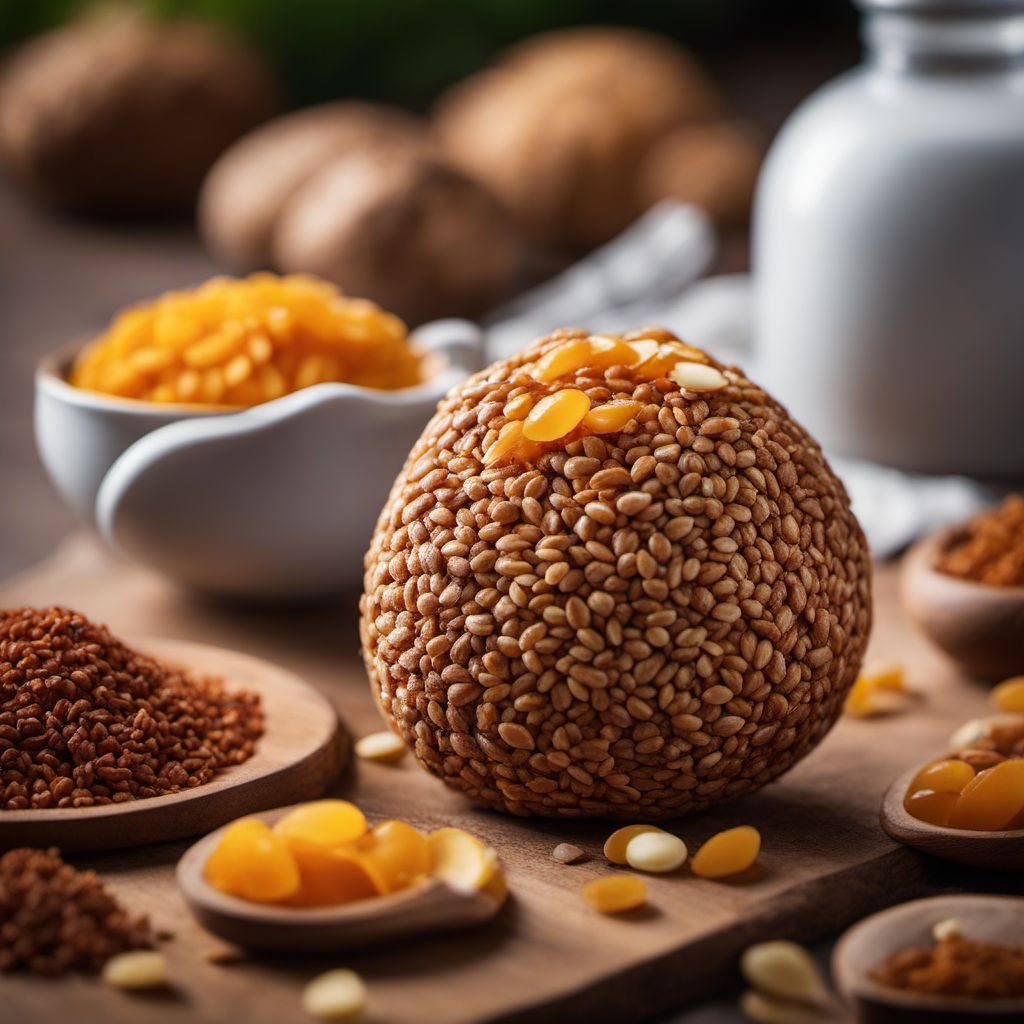
Ingredient
Pumpernickel
The Dark Delight
Pumpernickel is a traditional German bread made from coarsely ground whole rye berries. It has a dense and moist texture with a deep, dark brown color. The bread is known for its distinct earthy and slightly sweet flavor, often accompanied by hints of coffee or cocoa. Its crumb is compact and chewy, while the crust is thick and crispy. Pumpernickel is a versatile ingredient that adds depth and complexity to sandwiches, canapés, and even desserts.
Origins and history
Pumpernickel bread originated in Westphalia, Germany, where it has been a staple for centuries. The name 'pumpernickel' is derived from the German words 'pumpern' (to break wind) and 'Nickel' (a form of the name Nicholas), humorously referring to the bread's reputation for being difficult to digest. Traditionally, pumpernickel was baked in long, slow processes using steam or hot stones, resulting in its characteristic dark color and intense flavor. Today, it is enjoyed not only in Germany but also in various parts of the world as a beloved bread with a rich history.
Nutritional information
Pumpernickel is a good source of dietary fiber, providing approximately 3 grams per slice. It also contains essential minerals such as iron, magnesium, and selenium. Additionally, it is low in fat and cholesterol, making it a healthier bread option compared to many others.
Allergens
Pumpernickel may contain gluten, which can trigger allergic reactions in individuals with gluten sensitivities or celiac disease.
How to select
When selecting pumpernickel bread, look for loaves that have a dark brown color and a firm crust. The bread should feel heavy and dense when held. Avoid loaves that appear pale or have a soft texture, as they may not have been baked properly. Additionally, check the ingredient list to ensure that whole rye flour is the main ingredient, as some commercial varieties may contain additives or other flours.
Storage recommendations
To maintain the freshness of pumpernickel bread, store it in a cool, dry place in an airtight container or wrapped tightly in plastic wrap. Alternatively, you can freeze it for longer storage. Sliced pumpernickel bread can be kept in the refrigerator for up to a week.
How to produce
Pumpernickel bread is typically produced by professional bakers due to its complex baking process. However, adventurous home bakers can try making their own by following traditional recipes that involve long fermentation periods and baking at low temperatures. It requires patience and attention to detail to achieve the desired texture and flavor.
Preparation tips
Pumpernickel bread is commonly used in various culinary applications. It is a popular choice for sandwiches, especially when paired with smoked meats, cheeses, or pickled vegetables. The dense texture and robust flavor of pumpernickel also make it ideal for canapés, where it can be topped with spreads, cured fish, or pâtés. Additionally, pumpernickel crumbs can be used as a flavorful coating for meats or as an ingredient in desserts like bread pudding or trifle.
Availability
Germany, United States, Canada, Netherlands, Scandinavia

